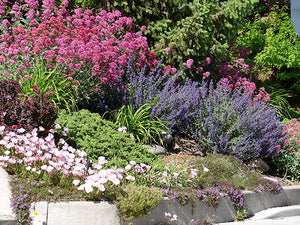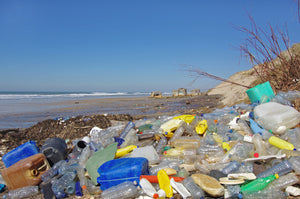NHB's ECO FRIENDLY News Blogs — Ecofriendly
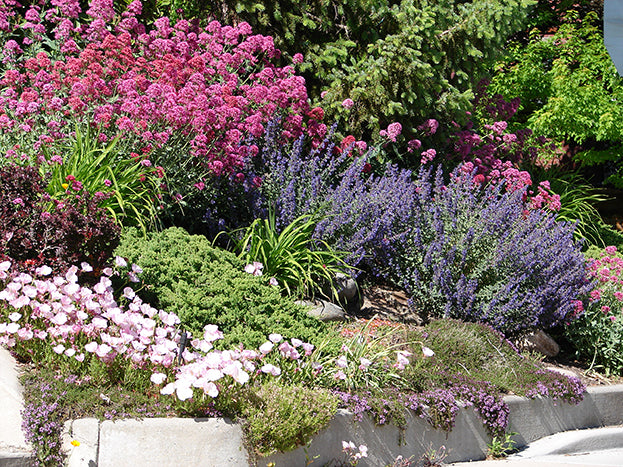
Eco-Friendly Alternatives to a Grassy Lawn
Americans have a love affair with sprawling green lawns. Although originally created by European aristocrats in the 17th century as status symbols, today's lawns are a symbol of the American dream. Unfortunately, they also can be a source of unnecessary burden for homeowners, which has led to a recent, and growing, interest in alternatives to grass in backyards. If you're looking to cut down (pun intended) on your grass while still maintaining a luscious green landscape, we've got some great eco-friendly landscaping options for you!
- Carole Zellers
- Tags: Compost Compost Bin Ecofriendly
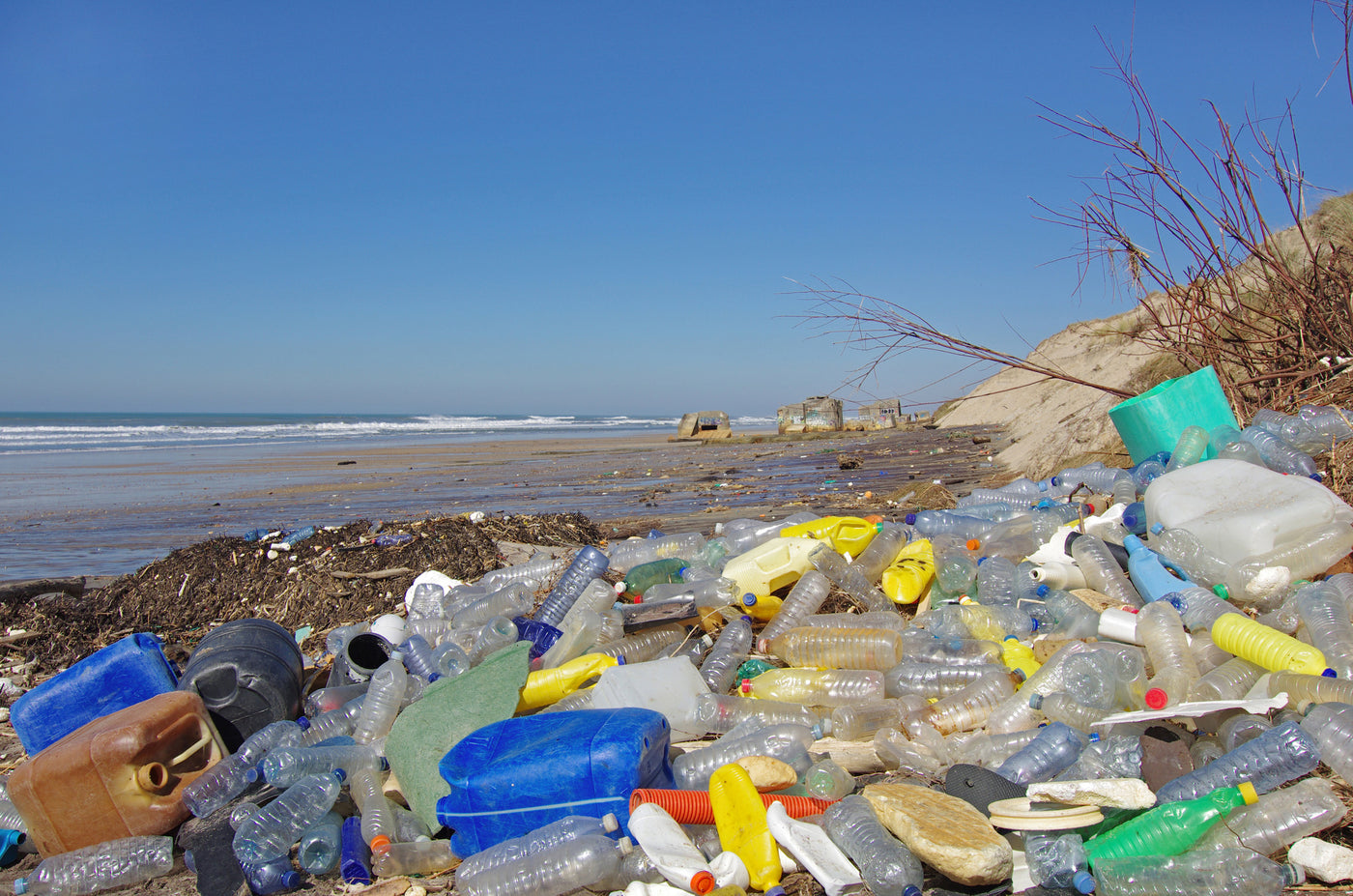
Six Ways To Reduce Plastic Output
The ocean is already full of plastic - more than 8 million tons that is! Keep in mind that one metric ton is equal to 2,205 pounds.
Now that's a TON of plastic...
Only about 14% of plastic packaging gets recycled while a significant portion of plastic material ends up in landfills and oceans.

Here are 6 ways to reduce plastic waste output (don't worry, they're simple & totally do-able) :
-
Use Reusable Bags - A number of grocery stores & dog parks offer a place to recycle plastic bags for other customers to use. Grab a reusable bag (or make one out of old t-shirts) and keep it in your car or purse so it's always handy. Use Reusable Veggie Bags to shop for produce or items at the farmers markets.
-
Skip the Plastic Wrap - Most plastic wrap can't be recycled because it's contaminated with food - this can cause costly contamination during the recycling process.
-
Wash Your Plastic Recyclables - Make sure you wash out your recyclable containers like peanut butter jars & soda bottles. Don't worry about getting them sparkly clean, but they do need a quick rinse. When workers sort through recycling bins and items, most of the times they have to send soiled plastics (and papers contaminated by foods from plastics) to landfill.
-
Know Which Plastics You Can Recycle - Save your recycling center money & time by knowing which plastics can actually go in your bin and be recycled. This includes no plastic bags, no Styrofoam, and #7 plastic bottles or containers (keep in mind SOME #7's are biodegradable and compostable - usually you can tell or it clearly states this) . (See guide here)
-
Use A Reusable Water Bottle - Buying one (or a few) reusable water bottles can significantly decrease how much plastic you put out. They make BPA free bottles, and also make cleaning tablets for these bottles as well to keep bacteria and germs away.
-
Not a fan of tap water? - Buy a Brita water filter, or buy an attachable filter that attaches to your kitchen sink - these filter out impurities that may be in your tap water source. Companies like Arrowhead & Alhambra recycle their big water bottles that they deliver to your house - they go through a rigorous cleaning process and refill with fresh water.
-
Skip the Styrofoam & Plastic To Go Containers - If it comes in a Styrofoam cup or box, resist from buying it. Styrofoam, when exposed to heat, is known to leach styrene, a known nuerotoxin along with other harmful health effects, so it's best to skip these items anyway. (Scroll to Plastic #6). Cook more! This will prevent the use of plastic take out boxes altogether. Have leftovers? Opt in for reusable glassware containers, what's awesome about these, is that they are microwave safe and won't leach any funky chemicals like plastic containers will leak.
Related : Recycle Numbers On The Bottom Of Plastics
References:
http://www.popsci.com/researchers-find-just-how-much-plastic-were-putting-ocean
http://www.lessismore.org/materials/17-recycling-faq
http://www3.weforum.org/docs/WEF_The_New_Plastics_Economy.pdf
- Gabriella De Luca
- Tags: EcoFriendly
Common Compost Questions & How To Compost
Some of your common composting questions, answered here!
A quick how-to to start your own outdoor compost pile. Video & steps listed below
1. How often should I replace my filter?
-
Everyone composts different things & at different rates. It's recommended that you change your filter every 4-6 months for proper odor control, and that you empty out your bin every two days to once a week (again depending on how much compost you put in your bin and what you compost).
2. Is it normal for larvae, worms, or maggots to be living in my compost filter?
-
Maggots & fruit flies appear when compost is too moist, and doesn't have enough dry material. It is recommended to empty your compost bin out more than once a week (every two days or so if there's a lot of moist compost). You can also start composting newspaper to add more dry material to your compost.
-
Maggots and bugs are part of the natural decomposing process, but let's admit, no one wants that in their kitchen!
-
We recommend replacing your filter if this happens and making sure you empty out your bin more often.
3. My filter is growing mold? Is this normal?
-
This seems to happen when you have too much moisture in your bin. Mold is a natural part of the decomposing process as well, since, well, basically you have soiled trash and food all clumped together! It's good to add more brown compost to this, as you may have too much green in a tight closed space.
-
It is recommended that you replace your filter if you have a thick layer of mold growing on your filter. If this is a continuing issue, you may need to adjust what you compost and how often you empty your bin.
-
Having your compost piled high in the bin so it touches the filter, is not recommended, and may aid in this issue as well.
4. What is the difference between green/wet (high nitrogen) and brown/dry (high carbon) compost?
Green/wet composting materials consist of:
-
Fruit & Vegetable Peelings: potato peelings, apple cores, banana peels, bite sized pieces of uncooked vegetables, strawberry tops. Avoid using vegetables cooked in oils - oils slow down decomposition process and may attract rodents or other animals in your outdoor pile
-
Coffee grounds - good source of nitrogen!
-
Plants & Plant Cuttings: most plants and their cuttings (including annual weeds) flowers, herbs
-
Egg Shells
-
Tea Bags/tea leaves
-
Plate scraping (excluding meats & bones if using in an outdoor pile)
-
Pulp leftover from juicing
Brown/dry composting materials consist of:
-
Dry leaves, dried grass clippings
-
Wood shavings, saw dust
-
Nuts & shells (excluding walnuts)
-
Shredded egg cartons (the ones made of paper)
-
Shredded newspaper, brown bags & tissue paper
-
Twigs
-
Hay
-
Peanut shells
For the best compost, it's good to do a 50/50 mix of both green and dry materials.
Avoid composting :
-
Colored paper that has lots of dyes i.e. magazines, catalogs, printed cards (toxins in the ink)
-
Animal droppings
-
Lime - high alkaline - pH can kill composting action
-
Meat, fat, grease, oils, bones if putting in an outdoor pile - do not break down, can coat materials & attract pests
-
Non-biodegradable materials
-
Toxic materials
-
Feminine hygienic products
-
Diseased plants
-
Walnuts - contains a natural compound that is toxic to some plants - again if putting in an outside compost pile
40+ Things You Can Compost
5. How do i start my outdoor compost pile?
-
Start on bare earth, or add a few scoops of garden soil. Starting on bare earth allows worms and other beneficial organisms to aerate the compost
-
Lay twigs, or hay a few inches deep to aid in drainage & also aerate the pile
-
Add compost materials to the layers switching off between the wet and dry.
-
Add manure or any nitrogen source (buckwheat, grass clippings, wheat grass) this activates the compost and helps speeds up the process
-
Keep compost moist - water every so often, or let the rain naturally do its part!
-
Cover with anything you have like wood, plastic sheeting, carpet scraps. This will help retain moisture and heat, which are two essentials for composting. Covering also helps prevent from getting too wet from being over watered by the rain - compost should be moist but not soaked.
-
Turn every few weeks with a pitchfork or a shovel. This helps aerate the pile and the oxygen is a must for the composting process to work. You can go ahead and skip this step if you have a supply of coarse materials such as straw.
Once your compost pile is established, it's best to add new materials in by mixing them in instead of layering them. Mixing or turning the pile is essential to aerating the materials and speeding up the process to completion.
Best to have a ratio of 50/50 of wet and dry (carbon and nitrogen). Too much nitrogen can result in smelly, dense, and slow composting. When in doubt, add more carbon.
Some common mistakes:
-
Keep things moist - don't forget you have a natural, active process happening in your yard or space, so it's key to check your pile regularly, especially during hot months .
-
Don't just depend on one material - different textures and nutrients is a beautiful thing! the disintegration of all these items create a plentiful diet for your plants that will also aid in disease and pest resistance. Stir often and let natural forces like water, air, heat, and biodegradable matter do it's work fast!
-
Don't get stressed or overwhelmed. It's not too difficult, just take a leap and jump in, even if you have no idea how it's going to turn out - you'll figure out what works and what doesn't.
6. How is composting beneficial?
-
It recycles kitchen and yard waste : households throw out on average 20% of food waste or scraps. Composting can help divert at least 30% of waste away from the garbage.
-
It conditions your soil : composting adds beneficial nutrients to your plants and helps retain the moisture.
-
Adds beneficial organisms to the soil : microscopic organisms in compost help aerate the soil, and break down organic material for plant use and assists in warding off diseases.
-
Good for the environment : Offers a natural alternative to chemical fertilizers.
-
Reduces landfill waste: one-third of landfill waste is made up of compostable materials. Most landfills in America are quickly filling up, with many of them having already been closed down.
Get started on your compost pile and get compostin'!
Choose from a variety of our Ecofriendly Bins
Looks great on your counter top and have odor preventing filters!
Swoop some of our Compostable Compost Bags - They decompose in your pile -ASTM D6400 compliant!

Some other blog posts you might enjoy:
40+ Things You Can Compost
Eliminating Food Waste With The Go Green Save Green Program
Why Is Composting So Important?
Recycle Numbers On The Bottom Of Plastics
- Gabriella De Luca
- Tags: Compost Compost Bin EcoFriendly How-To
Recycle Numbers On The Bottom Of Plastics
Ever wonder what those little numbers on the bottom of food containers, cups, and plastics are?
Here's a guide to what they mean!
Did you know that the use of plastics should be limited if at all possible, but some are safer than others?!
Let's learn a little bit about the multiple plastics we use to eat and drink from on a day to day basis and the type of impact they have on you, and the environment.
Every plastic container or bottle has a recycling symbol. This symbol is a number ranging from 1 to 7 within a triangle. These little numbers can actually offer a great amount of information in regards to toxic chemicals used in the plastic, how likely the plastic is to leach these chemicals, how bio-degradable the plastic is, and conclusively, the safety of the plastic.
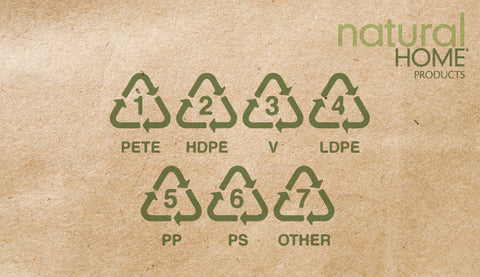
Look for these numbers before you buy!
Safer choices are symbolized with a 1,2,4 and 5
Avoid 3,6 and most plastics labeled 7 (some labeled #7 are in fact compostable, it usually states this on the packaging or container)
The Meanings of The Recycling Symbols:
Plastic #1 - PETE or PET (Polyethylene Terephthalate) Yes- Recycle this
-
A plastic resin and the most common type of polyester.
-
Widely accepted by the majority of curb side pick ups
-
Many water bottles, beverages, food items (peanut butter containers, salad dressing bottles, fruit containers), & other consumer products (like shampoo bottles & mouthwash containers) are constructed with packaging made from PET.
-
Manufactures use this because it's strong, transparent, & versatile. Some consider it safe, but this plastic is known to collect bacteria that accumulates.
-
Up to 100% of PET packaging can be made from recycled PET. This plastic can be recycled again & again. It's also recycled into carpeting fibers, t-shirt fabrics or fleece jackets, dog beds, winter coats, and automotive parts such as door panels & bumpers. [1]
-
The longer a liquid is left in a PET container, the greater chances Antimony Trioxide (used as flame retardant or catalyst) is released, same with warm temperatures like inside cars, garages, and enclosed areas.
Plastic #2 - HDPE (High Density Polyethylene) - Yes Recycle This
-
A polyethlene thermoplastic made from petroleum - One of the most commonly used plastics in the United States
-
Widely accepted by curbside pickups
-
Typically found in milk jugs, plastic bags, refillable plastic bottles, detergent bottles, yogurt tubs, plastic lumber, lawn & garden products, buckets & crates.
-
Plastic #2 is typically opaque in color, and is picked up by most curbside recycling programs.
-
This plastic is one of the 4 plastics that is considered to be safe and has a lower risk of leaching. Some studies have shown that this can leach the endocrine disruptor nonylphenol in both aquatic and human life, especially when exposed to sunlight.
-
It resists insects, rot, & other chemicals
-
By recycling your #2 plastics, you help create new: pens, recycling containers, detergent bottles, lumber, fencing, water pipes, fireworks plus more. [2]
-
Some alternatives you can use to avoid this plastic are glass or stainless steel reusable water bottles and food storage containers, and use recycled bags. Recycle plastics with #2 if you must use them.
Plastic #3 - V or PVC (Vinyl)- Not Usually Picked Up Curbside Polyvinyl chloride - the third most widely produced synthetic plastic made of 57% chlorine & 43% carbon.
-
Most commonly used to made drainage/sewage/plumbing pipes, food wrap, and detergent bottles, chemical storage tanks & plant piping; PVC has excellent chemical resistance together with good mechanical properties, making this an ideal for all the listed above.
-
Human Health : Dioxins are created in the manufacturing and production of PVC. Dioxins are highly toxic and can lead to developmental and reproductive disease, immune system damage, and cancer. [3]
-
Dumping PVC in landfill takes up a lot of land and is a waste of a valuable resource. PVC compounds are 100% recyclable. Most PVC products are lightweight and take up a lot of space, and may lasts for hundreds of years without degrading.
-
PVC can be recycled into: cables, flooring, park benches, speed bumps & traffic cones, film plastic, and decking & fencing. [4]
-
It's recommended to avoid as it can be extremely toxic - especially when burned (car and home fires, waste incineration, etc).
-
Once burned, dioxins are formed, which are human carcinogens and organic pollutants - these are considered one of the most toxic types of chemicals ever tested. It only takes 5 ounces of burning PVC to give off enough hydrogen chloride gas to kill the occupants in an average size bedroom in ten minutes. [PVC]
Plastic # 4 - LDPE (Low Density Polyethylene) - Often Picked Up Curbside - Varies from location to location
-
Most commonly found in squeeze bottles, toys, carrier bags, high frequency insulation, chemical tank linings, general packaging, gas & water pipes, food container lids, clear plastic bags, and shrink wrap. Fresh milk cartons and juice cartons are made with paperboard coated with LDPE film, making the cartons leak-proof. [5]
-
Plastic #4 is among one of the recycling symbols that are considered to be safe. Since it is found in many consumer products as well as packaging, it is likely that everyone uses plastic products or handles packaging made with LDPE daily. The U.S. Food and Drug Administration (FDA) and European Union food closely regulate the evaluation of these plastics.
-
LDPE is recycled into: compost bins & garbage cans, film plastic, furniture, paneling, plastic lumber, shipping envelopes, and garbage can liners. [6]
Plastic #5 - PP (Polypropylene) - Often Picked Up Curbside - Varies from location to location
One of the safer plastics to use & is recyclable.
-
Widely accepted by curbside pickups
-
Typically found in packaging & labels, textiles (rope & carpet), stationary, reusable containers, laboratory equipment, yogurt containers, ketchup bottles and medicine bottles.
-
PP # 5 can be recycled into: plastic lumber, car battery cases, manhole steps, and signal lights.
Plastic #6 - PS (Polystyrene) - Not Usually Picked Up Curbside
-
Naturally a transparent thermoplastic that is available as a solid plastic as well in as in the form of a rigid foam material (Styrofoam). These items are difficult to recycle - not biodegradable, taking several decades of hundreds of years to deteriorate. This type of plastic can also pose as health risks, leaching potentially harmful toxic chemicals, especially when heated.
-
Most commonly found in egg cartons, meat trays, disposable paper plates & cups (to-go boxes), medical test tubes, CD cases, smoke detectors, and the red "solo" cup. [7]
-
The foam form is often used as a packing material such as "packing peanuts"
-
Best to avoid whenever possible, especially with hot items, such as a hot coffee cup made of Styrofoam . It can leach styrene, a known nuerotoxin with other harmful health effects. [8]
-
PS can be recycled into: flower pots, cassette tapes, and plastic lumber.
Plastic #7 - Other, Miscellaneous - Not Usually Picked Up Curbside
-
This category was designed for all the other plastics, so reusing and recycling are not standardized. The most common concern with plastic #7 is the potential for chemical leaching into food or drink products packaged in containers made using polycarbonate, which contains the toxic bisphenol-A BPA. BPA is a xenoestrogen, a known endocrine disruptor - linked to infertility, hyperactivity, reproductive problems, and other health issues.
-
New plastic alternatives are marked with symbol 7 as well; this includes compostable green products, made from corn potatoes, rice, or tapioca.
-
Plastic #7 can be found in baby bottles, water bottles, iPod cases, nylon, sunglasses, "microwavable" dishes, some tupperwares and squeeze ketchup bottles. [9]
Remember, whatever plastics you choose, never heat them in the microwave or expose them to other extremes stresses, like keeping them in a hot car or hot garage. Always recycle or throw away containers once they start to break down or crack.
Choose from any of our all Natural and Ecofriendly Kitchen Gadgets - made with all natural bamboo fibers, and rice starches. Never coated with any chemicals and completely safe for your family, friends, and pets!
100% chemical free
(which means NO toxins or chemicals to leach!)
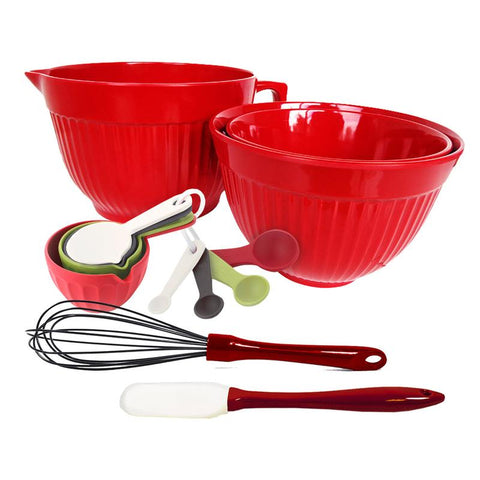
Plastic Free Kitchen Collection
Some other articles you might enjoy:
Things You Can & Cannot Recycle
Why Are You Still Using Plastic In Your Kitchen?
Plants That Help Purify & Clean the Air
References:
1 http://www.napcor.com/PET/whatispet.html
2 http://bearboardlumber.com/bearboard-plastic-advantage/what-is-hdpe.html
3 Dioxins and their effects on human health. (2010, May). Retrieved July 7, 2010, from World Health Organization: http://www.who.int/mediacentre/factsheets/fs225/en/index.html - See more at: http://www.ecolife.com/recycling/plastic/how-to-recycle-pvc-plastic-3.html#_ednref5
4 http://www.pvc.org/en/p/what-is-pvc
5 http://msdssearch.dow.com/PublishedLiteratureDOWCOM/dh_091f/0901b8038091f9e0.pdf?filepath=productsafety/pdfs/noreg/233-00587.pdf&fromPage=GetDoc
6 http://www.ecolife.com/recycling/plastic/how-to-recycle-ldpe-plastic-4.html
7 http://www.creativemechanisms.com/blog/polystyrene-ps-plastic
8 http://isites.harvard.edu/fs/docs/icb.topic967858.files/PolystyreneFactSheets.pdf
9 http://learn.eartheasy.com/2012/05/plastics-by-the-numbers/
Other References:
http://www.healthychild.org/know-your-plastics/
http://naturalsociety.com/recycling-symbols-numbers-plastic-bottles-meaning/
http://greenveg.com/know-your-plastic-recycling-number/
- Gabriella De Luca
- Tags: Bamboo EcoFriendly Molded Bamboo
Bamboo Utensils VS Wood Utensils
Bamboo utensils have increasingly become more popular over the years. More and more people are turning to bamboo instead of wood for loads of reasons!
-
Unlike wood, bamboo is not a tree, but actually a grass - but don't be fooled! Bamboo was actually used as reinforcement for concrete instead of steel at one point, and was also used to support bridges (comparably just as strong as steel).
-
Bamboo can grow as much as 35 inches in 24 hours vs 3' to 4' per year for trees that harvest wood
-
An entire bamboo forest can be regenerated in three to five years
-
Bamboo reaches it's full level of maturity before harvesting - about 5-7 years (Wood is about 30 years until harvest)
-
Because Bamboo is naturally anti-bacterial & anti-fungal, bamboo is grown without the use of toxins, pesticides, or fertilizers, as opposed to wooden products.
-
Bamboo is less porous than wood, making them water resistant and stain resistant.
-
Bamboo is stronger than any oak, or wood, and actually has a higher *tensile strength than steel (Bamboo's tensile strength is 28,000 per square inch, and steel's strength is 23,000 per square inch)
-
Absorbs very little moisture, so it won't shrink unlike it's wooden counterparts.
-
Bamboo is harder than maple and oak which makes it the ideal material for a lighter weight, stronger, and superior choice for kitchen utensils and cutting boards when trying to decide between bamboo and wood.
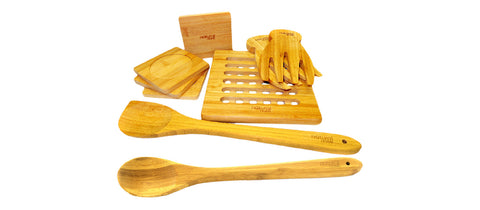
Other Blogs You Might Enjoy:
How To Clean & Care For Your Bamboo
Natural Home Bamboo and Molded Bamboo® makes Going Green in your kitchen so simple!
Get 15% off any Bamboo Item using code Bamboo at checkout
With the rising concern of how potentially harmful plastics can impact our bodies and our planet, Bamboo and Natural Home's Molded Bamboo® offers a healthy alternative, free from BPA's, toxic coatings, and always manufactured responsibly.
We only harvest our Bamboo when it's fully matured, and construct our Molded Bamboo® items out of only bamboo fibers and natural dyes.
*tensile strength definition: the resistance of a material to breaking under tension*
Information gathered and adapted from:
Profitableplantsdigest.com
ehow.com
Midatlanticbamboo.com
- Gabriella De Luca
- Tags: Bamboo EcoFriendly Moboo Molded Bamboo
How To Clean & Care For Your Bamboo
Since bamboo is actually a strong grass-not a wood, and is a natural resource, washing and taking care of these utensils are similar to taking care of wooden utensils. However, don't get the two confused! Compare the differences here! You can keep your bamboo utensils looking nice and new by cleaning them and conditioning them as needed.
It's always STRONGLY recommended that you DO NOT wash bamboo in the dishwasher - the harsh detergents and heat is way too much for our bamboo kitchen friends.
Some Items To Have On Hand:
-
Dish Soap (Get pH Balanced Dish Soap)
-
Cloths for drying
-
Food Grade Mineral Oil or Bamboo oil
Step 1:
Use a regular mild dish soap or a pH balanced soap, and wash your bamboo utensils in soapy hot water. Use a cleaning cloth to scrub away stuck on food particles. (Get an EcoFriendly REUSABLE Cloth)
Step 2:
Rinse your bamboo utensils in warm water. Pat-Dry the utensils with a clean cloth to the best of your ability, then stand them up right in your dish dryer/drainer to complete the drying process.
Step 3:
If your bamboo utensils start to look or feel dry, re-hydrate them with mineral oil, or bamboo conditioning oil (found in most kitchen supply stores). To use the oil, apply several drops to a clean cloth and rub all over your utensil. Repeat this process if necessary. Let the utensil cure for a day or two before using again.
Recommendations:
-
If possible, rinse your bamboo utensils right after use to prevent food from getting stuck on
-
Use your nail or the dull side of a knife to scrape off stuck on food
-
Try to not let your bamboo sit in water for an extended amount of time (i.e. left in a bowl of water/at the bottom of the sink) this may cause your utensil life to shorten
-
Set aside a separate crock, or area for dirty bamboo utensils
-
Avoid cooking raw eggs and raw meat - if you must, washing your utensils in a bleach solution is recommended (about 1 teaspoon of liquid bleach per quart of water, 5mL per liter). Rinse thoroughly afterwards.
Shop Our Bamboo Line
Get 15% off any Bamboo Item using code Bamboo at checkout
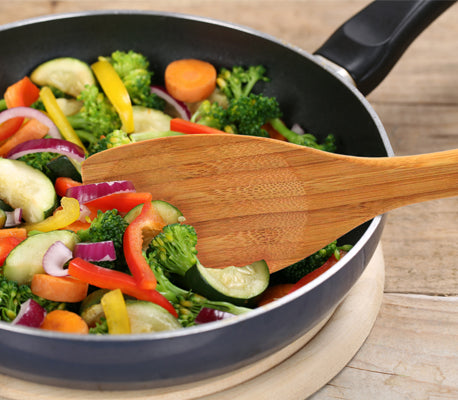
Some Other Articles You Might Enjoy:
Eliminating Food Waste IS Doable
- Gabriella De Luca
- Tags: Bamboo Ecofriendly How-To
